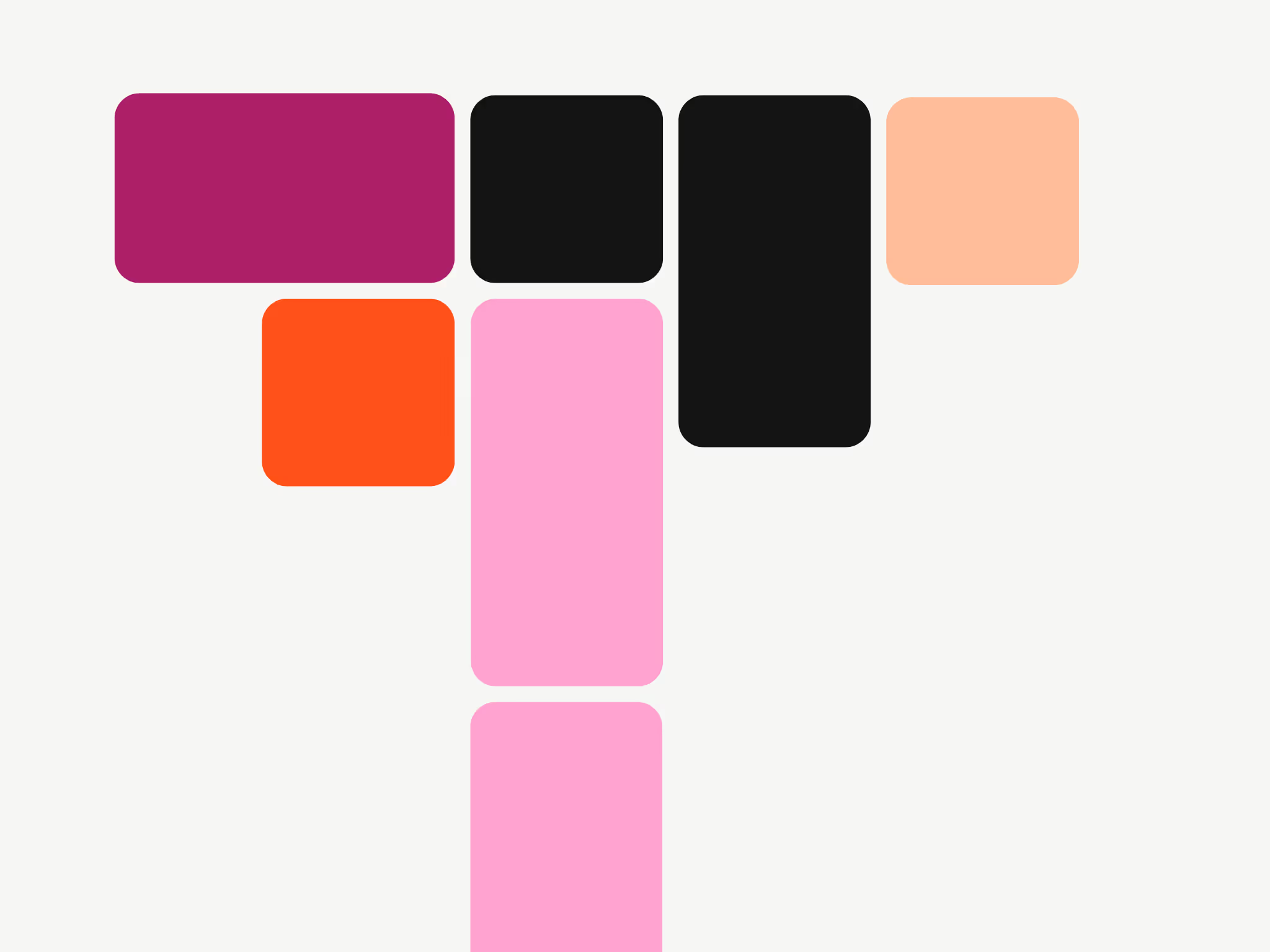An influencer marketplace is a place that connects influencers and brands. Like Fiverr or Upwork can connect you with a freelancer, influencer marketplaces can connect you with creators. The marketplace acts as an intermediary and helps you manage various types of influencer collaborations. Popular choices include Billo, Insense, and Collabstr.
The benefit of using an influencer marketplace is finding many creators, fast. You share your requirements and the marketplace matches you with an influencer who meets your needs. You also don’t have to worry about communicating and managing influencers since the marketplace is a middleman between the two parties.
Despite the surface-level advantages, influencer marketplaces are among the least effective ways to find creators, according to the 63 professional influencer marketers we asked.

Let's dig into the "why".
But first…
There are some cases where an influencer marketplace is suitable
In our recent roundtable discussion with influencer marketers, Ben Williams (Senior Influencer Manager at Blast), shared a specific scenario where an influencer marketplace might work.
LTK (formerly rewardStyle) would be considered a two-sided marketplace. It has a limited pool of creators. But Ben points out:
- You can get your hands on a creator's affiliate performance. This ensures you’re partnering with influencers who have showcased proof of generating sales and conversions.
- If you want to spend a lot of budget & add a lot of influencers quickly, it's one of the only methods you can do that at scale

It still requires that you're in aren't too fussy about who you're working with. If you're in a broad category like fashion or beauty, and you don't mind where the creator is located & where their audiences are, this could work.
If you’re looking for niche creators with specific audiences and content types (who your competitors aren't also able to find), marketplaces aren’t the right place to look.
And there’s more…
4 reasons why you shouldn’t find creators using an influencer marketplace
1: Marketplaces don’t have a diverse pool of creators
Despite boasting big numbers of creators, many marketplaces are severely limited in the diversity of creators. For example, Billo only lists creators based in the U.S. and Insense is also limited to creators from the U.S., U.K., Canada, Australia, and a few countries of the EU.
If you sell globally or in a wide variety of markets, influencer marketplaces won’t have the diversity you’re looking for.
What’s even worse: some marketplaces will also limit how many creators can apply to your request. Only 20 creators can apply on Billo for your single video request. You have to dismiss applications if you want other creators to see and apply to your request.
Marketplaces are also not useful at helping you find niche influencers. For example, if you work in an industry like fishing, it’s unlikely influencer marketplaces can help you find creators perfectly aligned to your niche.
2: You still have to vet influencer profiles
Even if you managed to find a creator via an influencer marketplace, you still have to do the legwork of analyzing their influencer profiles. Most marketplaces are focused on boosting their volume of creators, so the quality of creators is often compromised.
For example, in this Collabstr profile, you can get a rough idea of the creator’s niche and prices, but you don’t know their engagement rate, fake followers, growth rate, and so on.
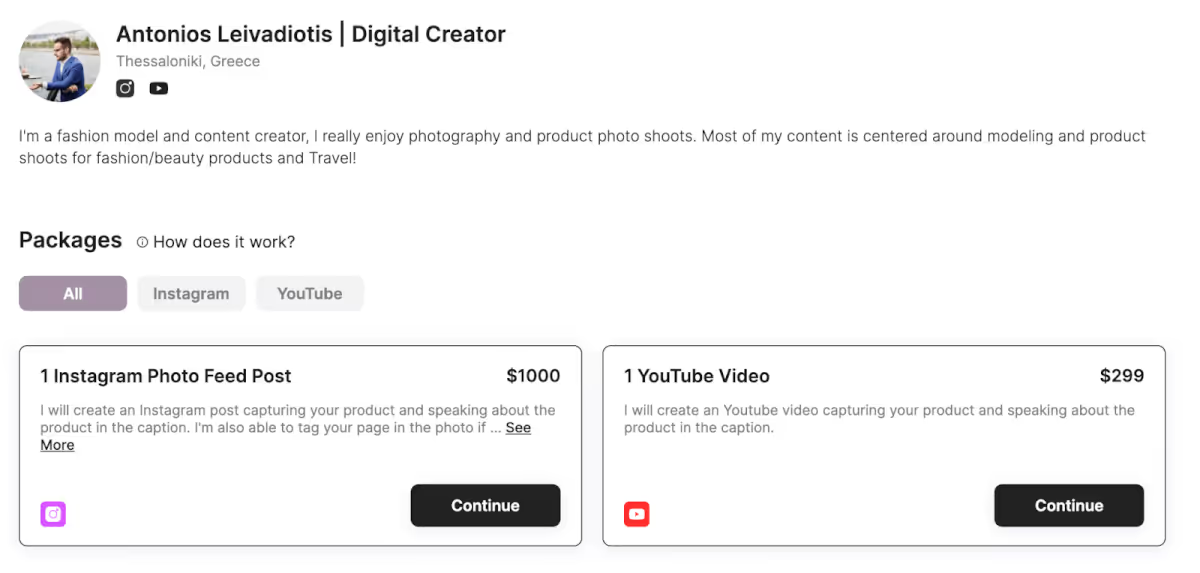
Influencer performance metrics are crucial for making any influencer marketing strategy a success. If you don’t know these metrics during the discovery stage, it’s a time-suck to find the data from other ways (using influencer analysis software, asking influencers, etc.) and then deciding if the creator is a right fit for your brand.
Even marketplaces like Billo that allow you to fill a brief don’t have a filter for influencers matching your desired metrics. You can have a Creator Criteria, but it doesn’t include setting parameters for minimum follower count, engagement rate, or fake followers.

You can add your preferred metrics in the “Additional notes,'' but you can’t filter for them directly. You can’t even see the creator's performance for influencers who have applied to your task. There’s Billo’s native “creator rating” but it doesn’t account for any tangible performance metrics.
3: Creators on marketplaces are pitching to multiple brands (including your competitors)
Marketplaces lure creators in by promising a certain number of brand deals every week or every month. Their goal is to increase the quantity of creators in their database. But promised deals don’t always happen for every creator. In the influencer marketplace Billo, a creator has to apply to 25 tasks to get accepted by a single brand. For another marketplace, Insense, an influencer has to pitch 20 brands to get one deal.

These numbers mean creators (who likely want to make a full-time living using their craft) are filling a plethora of applications every day — including your competitor’s. In an influencer marketplace, you have no leverage over your rivals. Everyone has access to influencers present in the marketplace.
To find untapped creators with a lot of potential (like a fast-growing influencer), you have to move away from marketplaces. You won’t find a niche hidden gem there.
Also, creators are often prized for their speed in influencer marketplaces, not their work quality. Billo, for example, needs creators to deliver a video in as less as five days after they get selected by a brand and edits in 48 hours. If not, your rating drops and your account might even get temporarily suspended.
This might translate to overworked, burned out creators whose focus is increasing the number of videos they can make instead of creating the best video for you. The high commission rates of marketplaces — like Collabstr’s 15% cut from every partnership — also mean influencers get paid less.
4: Influencer relationships remain transactional in a marketplace environment
It’s no surprise most marketplaces refrain creators from communicating outside of their platform. They want to remain the middleman and facilitate the relationship to make money. Does this reduce the admin load on your end? Sure. Is it worth the cost of having a transactional relationship with your influencer partners? Absolutely not.
Influencer marketing is a relationship business. It needs the human touch to be successful. The stronger your connection with the influencer, the more authentic your collaboration together. But marketplaces don’t allow that to happen because you rarely communicate directly with the influencer. And all you talk about is the deliverables, the output — not the brand-alignment, company values, and personal relationships.
“But fostering a connection with influencers is only crucial when you want a long-term relationship with the influencer.”
Even if you lean on one-off partnerships on the short-term vs. long-term collaborations question, there are certain nuances about creating brand-aligned content and narratives that you just can’t do async on a chat. But marketplaces won’t allow you to blossom the relationship — not even to a video call or email.
But if not marketplaces, what other methods can you use to find influencers?
3 alternatives to Collabstr and other influencer marketplaces
1: Influencer search software
An influencer search software like Modash is one of the best alternatives to influencer marketplaces for five reasons.
1) It has the database of every creator on Earth on Instagram, TikTok, and YouTube with over 1K+ followers. Literally everyone. No limitations on niche or location.
2) It lets you apply filters based on influencer and their audience metrics — like location, follower count, engagement rate, niche, etc. But apply these filters gradually (not all at once) to not significantly narrow down the list of creators you’re partnering with.


3) It enables you to do a deep dive on each influencer’s profile — see their metrics, previously sponsored posts, growth rate, and more. Without reaching out.

4) It helps you find influencers similar to the ones you like using the influencer lookalike feature.
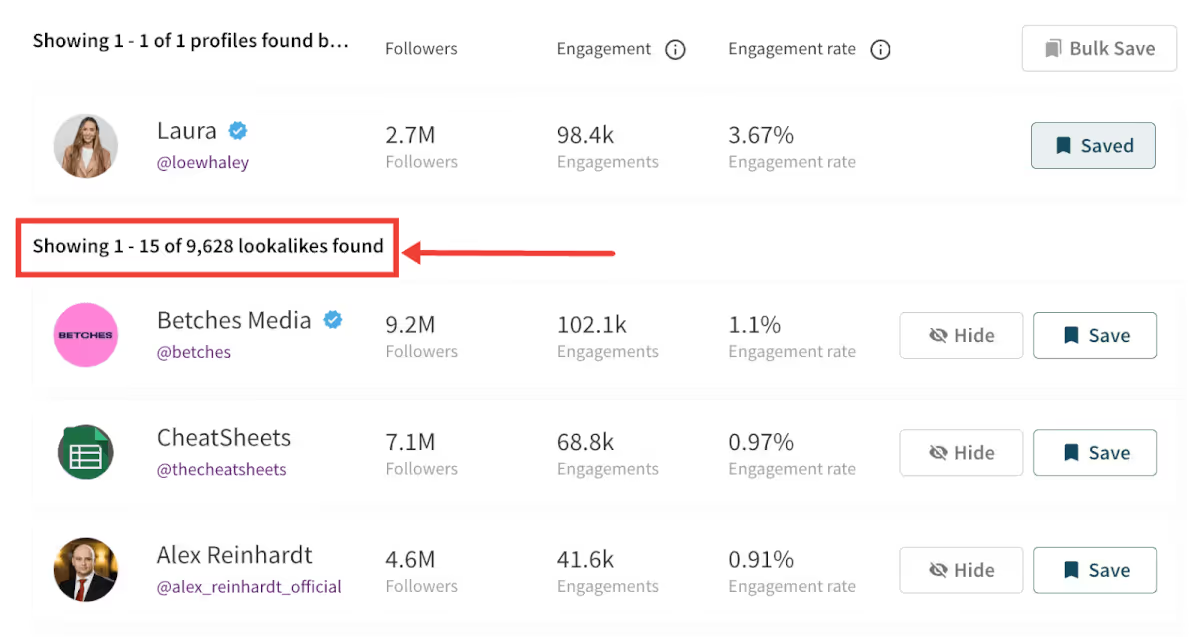
5) It finds the influencer's email contacts, but doesn’t communicate on your behalf. You can develop direct influencer relationships with no intermediary in the middle.
Ready to give it a spin? Try a free trial and see the magic for yourself. No credit card or commitment required.
2: Search directly on social media platforms
More and more social channels are evolving their search capabilities to help you find your creator partners more easily. YouTube’s SEO game was always strong to show you relevant creators and related content from other creators.
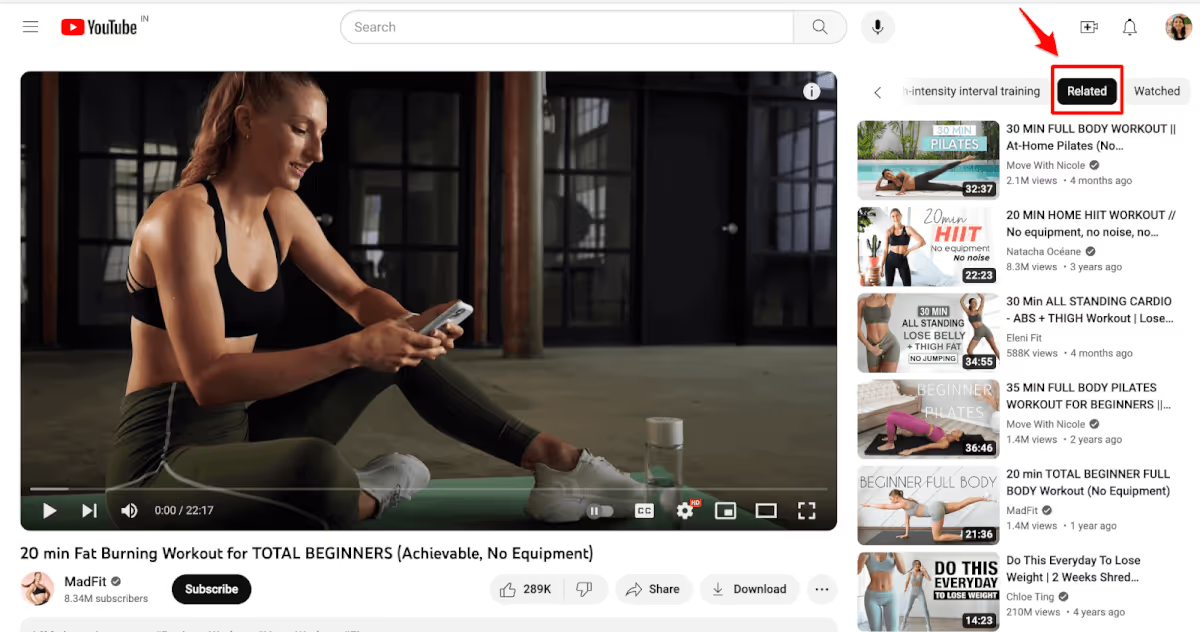
Instagram and TikTok are also advancing their search engine capabilities — search for industry-related terms and both platforms will give you content and creators aligning to your niche. For example, if you want to find fitness influencers, search for terms like “workout” on Instagram to see workout related content and workout speciality creators.
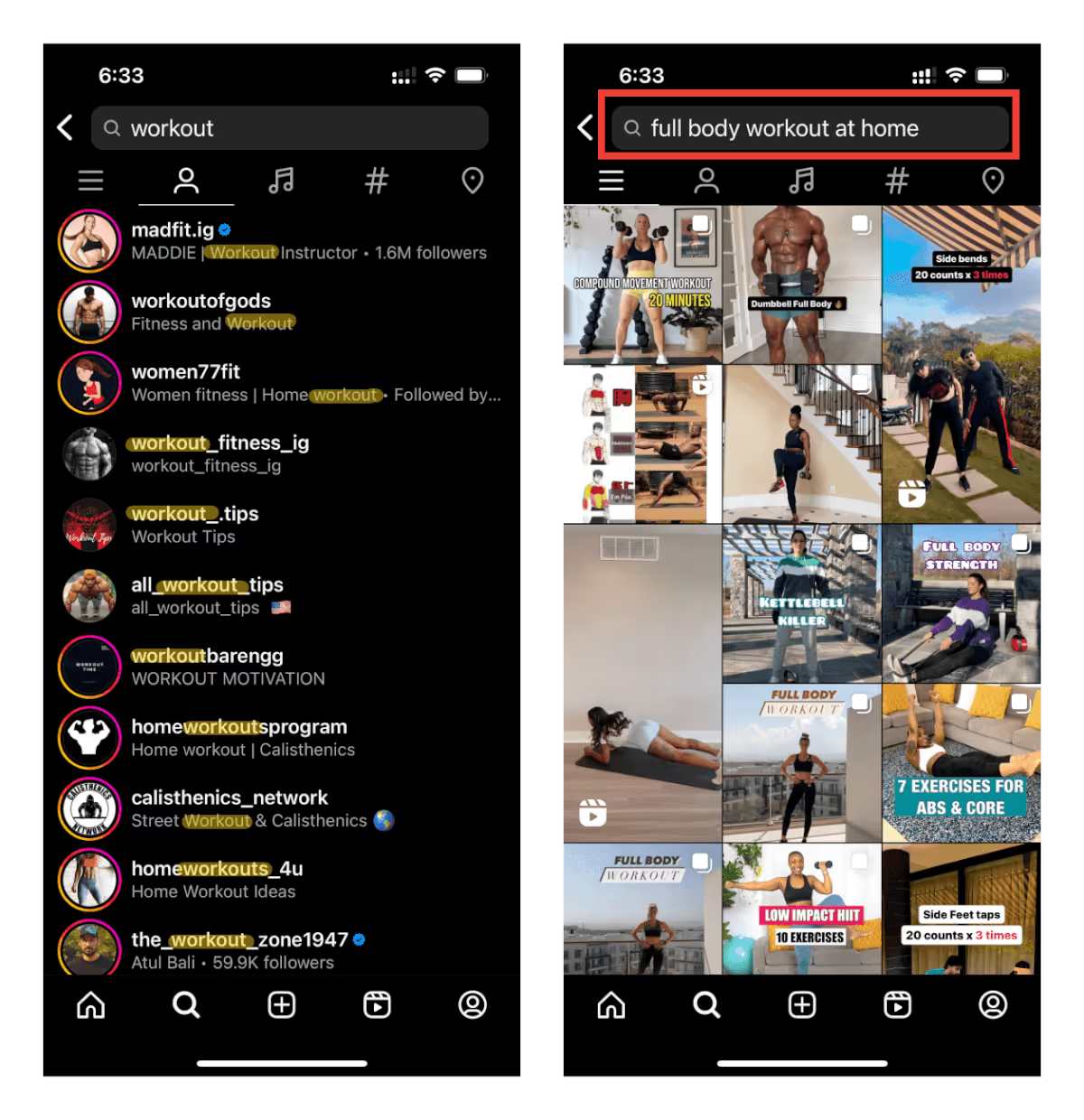
The best part? The more you engage with content within your industry, the more the algorithm will recommend similar content (from different creators) to you. Josie Hull, Creator Marketing Manager at Just Spices, has found great success by employing this technique:
Apart from searching directly, you can also use hashtags to narrow down your influencer search. Broadly, there are four kinds of hashtags:
Branded hashtags: These are brand-name hashtags like #Sephora. While this is the most useful for tracking your company’s posts, you can also use hashtags of tangent businesses selling to a similar audience.
Interest-related hashtags: Use niche hashtags — like #homecareproducts — to find influencers catering to a particular interest and/or category.
Profession-related hashtags: Use an expert hashtag — like #Doctor or #Cosmetologist — when you want to find a trusted influencer in your industry who has a professional certification of some sort.
Location hashtags: Use a specific location’s hashtag — like #London — to find local influencers in a specific region.
The best part about finding influencers using social platforms directly is you don’t have to spend a dime on discovery. But it’s time-consuming and tedious. It’s best combined with an influencer discovery and analysis software to speed up the process.
3: Talent agencies
Talent agencies (good ones) go one step above the influencer marketplace and help you find relevant influencers without losing the human touch. You still don’t maintain any relationship with the influencer directly, but an agency's focus isn’t just delivering outputs to you. The goal is to help you find their portfolio's most relevant and brand-aligned creators.
Another pro is agencies might vet influencer profiles more thoroughly than a marketplace because their core goal isn’t maximizing the number of creators.
Bolt partners with 100+ influencers in over 15 markets every month and part of their strategy is working with local talent agencies. In the team’s experience, some creators they find via Modash are repped by an agency — which is the only way to work with them. By collaborating with an agency, they also get more creator recommendations they would’ve otherwise missed.
Namanh Hoang, Global Director of Branding at CyberPowerPC also highlights how many bigger influencers work with talent agencies to manage their business.
Plus, if you practice influencer marketing globally, having a local talent agency by your side is excellent for making communication easier.
But remember you still have to couple this method with an influencer analytics tool to ensure the creators recommended by talent agencies align with your requirements.
Avoid the influencer marketplaces
The bottom line is there’s no need for you to tolerate the cons (and the weight on the pocket) of influencer marketplaces. There are plenty of superior ways to find influencers — whether you’re a small or large brand with a narrow or wide budget.
Read the various methods other influencer marketers use to find influencers in our survey. Or take the first step by using an influencer marketing software like Modash. It solves all the cons of marketplaces in a domino effect and all of it at a reasonable price. Don’t buy it? Take Modash for a free spin using the free trial.





